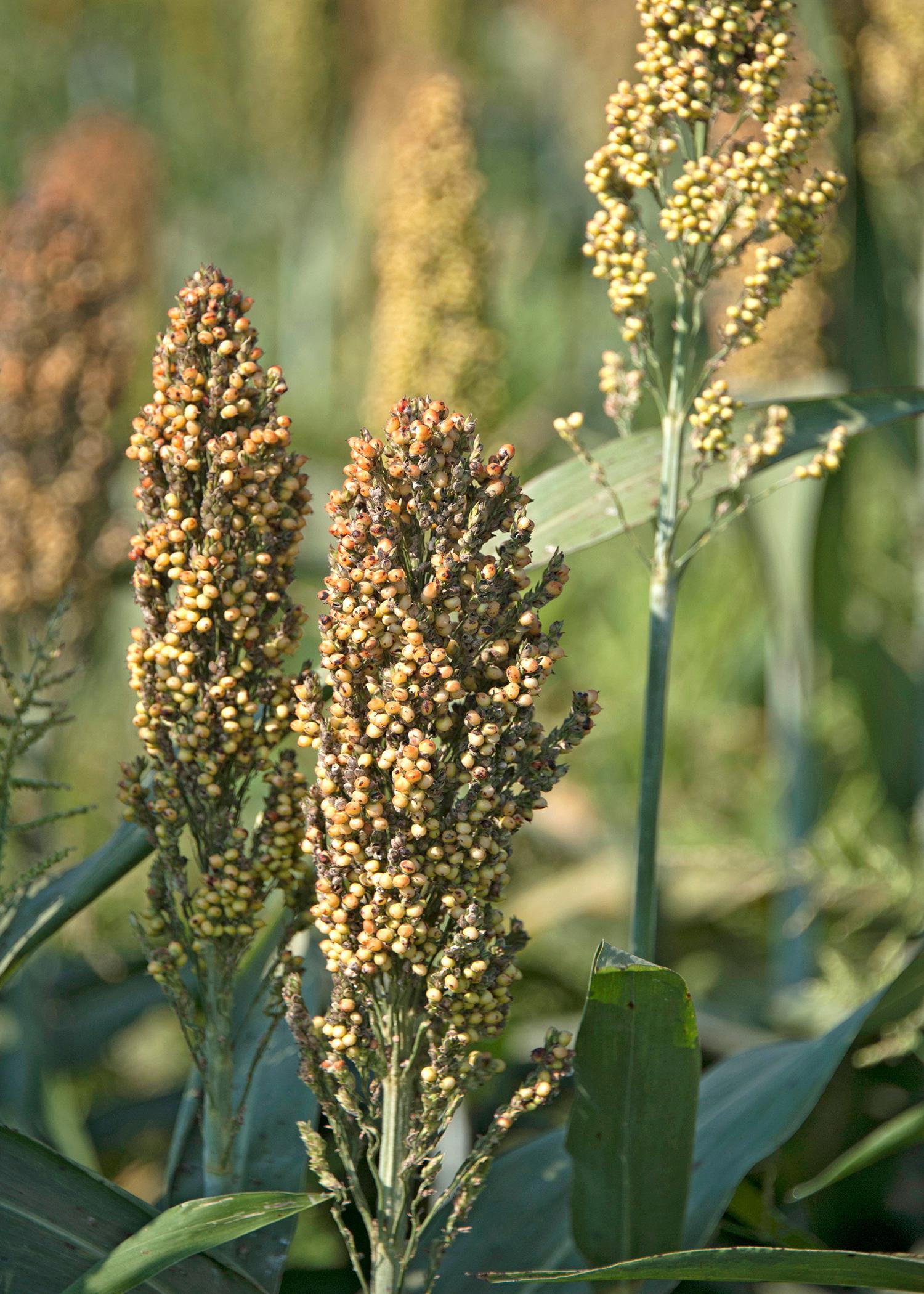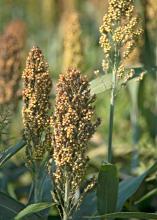Information Possibly Outdated
The information presented on this page was originally released on December 5, 2014. It may not be outdated, but please search our site for more current information. If you plan to quote or reference this information in a publication, please check with the Extension specialist or author before proceeding.
Seed treatments crucial to prevent sorghum pests
MISSISSIPPI STATE -- Sightings of sugarcane aphids on sorghum crops, commonly known as milo, have increased rapidly from one Mississippi county in 2013 to the entire northern and central portions of the state this year.
Seed treatment and increased crop monitoring will be crucial in preventing the pests from causing major damage to future grain sorghum crops in Mississippi, said Angus Catchot, a row-crops entomologist with the Mississippi State University Extension Service.
Last year was the first time producers reported seeing aphids feeding on sorghum and not just sugarcane, Catchot said.
“Researchers think the aphid made a host shift, which is not uncommon with aphids,” he said. “It’s been reported before. They evolved a biotype or mutation that allowed it to feed on grain sorghum. Since then, it’s spread rapidly throughout the South.”
The sugarcane aphid, or Melanaphis sacchari, feeds on the vascular tissue that moves sugars through a sorghum plant. It reproduces asexually. In the right environment -- usually between 59 and 77 degrees with high humidity -- a new generation can develop every five to seven days.
This leads to exponential population growth in a matter of weeks if not controlled quickly, Catchot said.
“The difference with this insect is, because it’s more or less new, there are not a lot of pathogens or diseases that keep it under control in sorghum,” Catchot said. “We have a lot of beneficial insects that work on it, but that’s generally not enough. It’s not that it reproduces any faster than other aphids. It simply doesn’t have some of those natural checks in place that keep the population suppressed.”
A tell-tale sign of infestation is the appearance of honeydew on the leaves of the plant. The pests themselves can be seen on the underside of the leaf.
“Honeydew looks like cooking oil or something that’s shiny and sticky,” Catchot said. “When aphids are present and leaves are dry, you can see this shiny substance.”
The biggest key to an improved crop next year is being proactive, he said. Sorghum seed treated with insecticide that prevents infestation is already on the market. That option costs the producer more on the front end, but it protects the crop from the aphids for 35 to 40 days after planting, Catchot said.
“With this pest, it will be critical to utilize the insecticide seed treatment options for grain sorghum,” he said. “You don’t want them getting on newly emerged grain sorghum then have to fight them all year.”
Catchot said he also recommended scouting each field twice a week and limiting sprays for sorghum midge and low levels of army worms unless they are at the control threshold.
“If you kill the beneficial insects, then the aphids will get out of hand really quickly,” he said. “We need to make sure we’re scouting and spraying only as needed, because you can make the problem much worse much faster.”
Entomologist and consultant Jared Pepper was scouting sorghum producer Matt Edgar’s 100-acre crop in Yazoo County early this summer when he saw sugarcane aphids in that area for the first time. Pepper said social media reports from Catchot tipped him off that the pest was a significant threat.
Identifying those signs early and using an aerial insecticide application helped regain control over nearly all the infestation, Pepper said.
“We were on top of it because of the awareness from the Extension Service,” Pepper said. “I know some producers made multiple applications. Aphids got into ours a little later, so we were able to make that one shot, and they didn’t come back that heavy.”
Edgar said sorghum fields he managed this year in the Delta experienced more damage. One of several milo fields he has there was not sprayed once the aphids were detected. That field produced next to nothing, Edgar said.
“We didn’t put a combine in it,” Edgar said. “In the Delta, the yield was 20 percent less than what we had in the hills because we caught aphids late and never got 100 percent control of them.”
Catchot said he believes an additional treatment compound will be available by the time growing season begins next year. This would provide a separate chemical that could be used to fend off infestation.
“The problem with having only one product on the market is aphids become resistant really quickly,” Catchot said. “It is critical that we have more products available to allow rotation and delay resistance development.”




